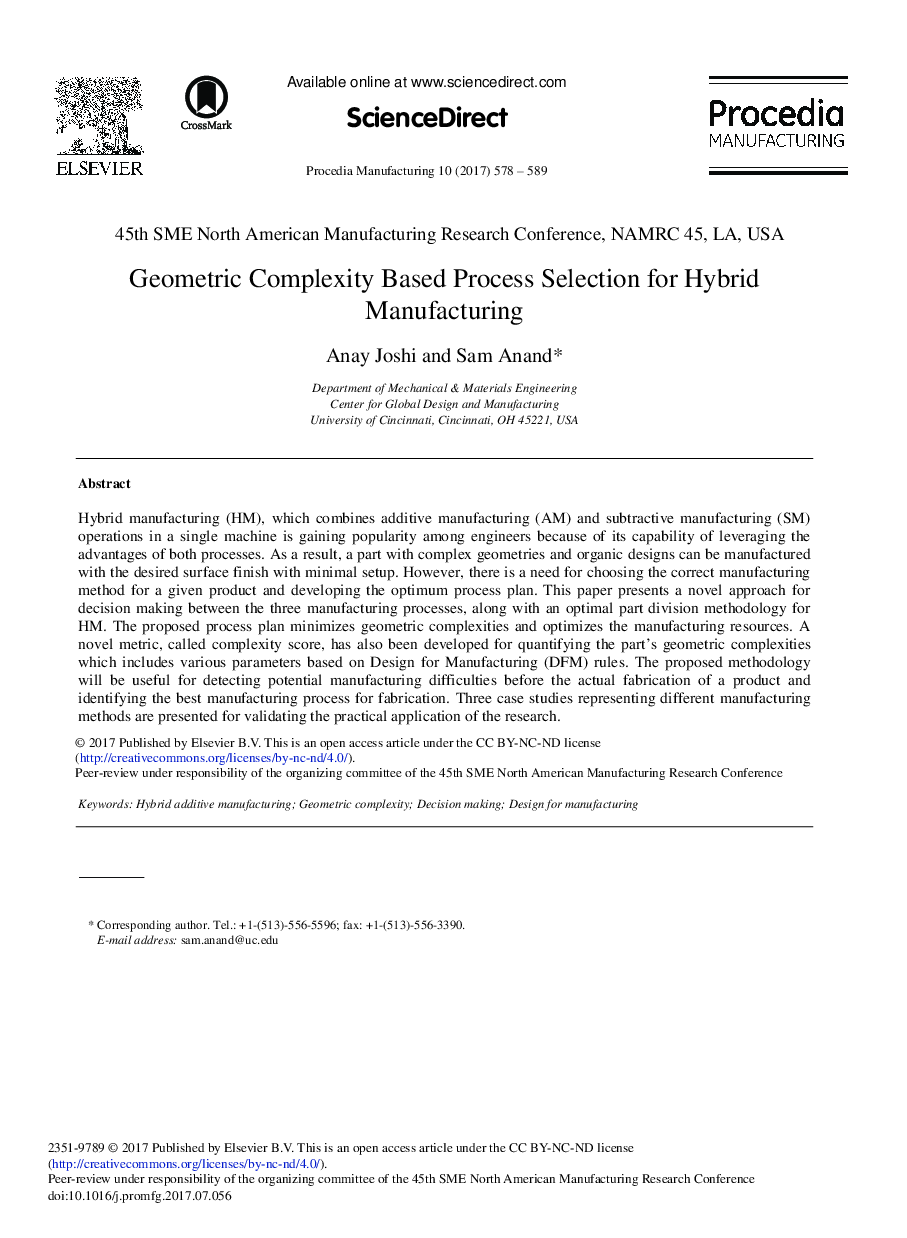| Article ID | Journal | Published Year | Pages | File Type |
|---|---|---|---|---|
| 5128804 | Procedia Manufacturing | 2017 | 12 Pages |
Hybrid manufacturing (HM), which combines additive manufacturing (AM) and subtractive manufacturing (SM) operations in a single machine is gaining popularity among engineers because of its capability of leveraging the advantages of both processes. As a result, a part with complex geometries and organic designs can be manufactured with the desired surface finish with minimal setup. However, there is a need for choosing the correct manufacturing method for a given product and developing the optimum process plan. This paper presents a novel approach for decision making between the three manufacturing processes, along with an optimal part division methodology for HM. The proposed process plan minimizes geometric complexities and optimizes the manufacturing resources. A novel metric, called complexity score, has also been developed for quantifying the part's geometric complexities which includes various parameters based on Design for Manufacturing (DFM) rules. The proposed methodology will be useful for detecting potential manufacturing difficulties before the actual fabrication of a product and identifying the best manufacturing process for fabrication. Three case studies representing different manufacturing methods are presented for validating the practical application of the research.
